mmcartalk
Expert
- Messages
- 4,164
- Reactions
- 2,677
MM Retro Write-Up: 1987 Hyundai Excel
IN A NUTSHELL: The car that gave Hyundai a bad name in the U.S.
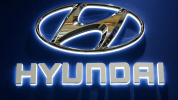
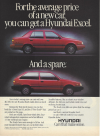
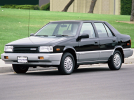
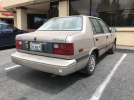
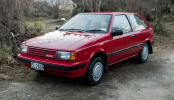
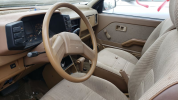
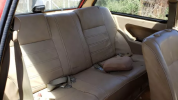
Although there is only a limited amount of actual truth to it, there is an old saying when shopping for a vehicle….……that you get with you pay for. Many different factors can affect what a vehicle actually gives you for your hard-earned cash, but, in general, money doesn’t grow on trees…if automakers spend more in developing/marketing/producing a vehicle than they get back from sales, they aren’t going to be in buisness very long….at least not without Government handouts LOL.
In the mid-late 1980s, however, Hyundai, a then-rapidly-growing corporation headquartered in South Korea, which not only produced vehicles but a number of other products as well (Hyundai did not buy a majority of Kia until 1998), correctly foresaw the need for a small inexpensive compact car in the U.S. that would provide an alternative to both the poorly-built American-designed compacts and the well-built but overpriced Japanese compacts. The Reagan Administration, although somewhat conservative politically and generally believing in free-business-markets, allowed itself to be swayed by the arguments of Ford, GM, and Chrysler to pressure Japanese automakers into “Voluntary” import-quotas on their vehicles (which, at that time, were mostly imported from Japan, and not built in the U.S, as would later be the case). American car-buyers, fed-up with Detroit’s unacceptably low quality, particularly from Chrysler and GM products (and I myself was one of those fed up), were turning to Japanese automakers in droves….I had gravitated to Mazda. The Japanese automakers, not wanting to lose the American market, reluctantly agreed to the quotas (and to a 25% tariff on imported trucks), and this, of course, made new vehicles from those companies difficult to get, with lines, waiting-lists, and mark-ups at dealerships over list. (I managed to by my first 1984 Mazda close to list, but not quite).
Hyundai, correctly, foresaw a place for their own Excel compact in the American market, which would give American consumers an alternative choice to Detroit’s junk and Japan’s overpriced compacts. The base Excel, introduced in 1987, had a low, low base price of $4995, at a time when you could pay almost twice that for some upmarket compacts from other brands. The car, not surprisingly, was an immediate smash-hit, and set a then-record first-year sales for an import. But the car, also, not surprisingly for that low a price, also had some noted shortcomings. First of all, it was not a true Hyundai product as such…the 66-HP 1.3L and 71-HP 1.5L in-line normally-aspirated four engines and 4/5-speed manual/3-speed automatic transmissions were built by Mitsubishi, and the Excel itself was essentially a rebadged Mitsubishi Precis. Mitsubishi itself sold the same Precis at its own dealerships, which, at the time, was a better-established company in the U.S., even though Mitsubishi had only started to sell vehicles under their own name here in 1983….a mere four years before the Excel was introduced. Second, the Precis/Excel, particularly with the automatic, was markedly underpowered for American driving conditions….I will get into that a little more in my test-drive description. Third, the car was not designed or assembled with a particularly high quality of materials or construction, although, in some ways, it was no worse than what I saw from Chrysler or GM in the 1980s….I’ll also get into that in the test-drive. Fourth, it may have satisfied a lot of customers when brand-new in the first year, but, after that, quickly developed a reputation for early problems and breakdowns.
Even today, some 35+ years later, I still remember my Excel test-drive quite vividly. It was at the same small dealership, in Fairfax, VA, that had sold me a new Mazda GLC three years earlier…which I still had. The former Mazda franchise had moved into a new larger facility across street, and the new Hyundai franchise had bought out the old building. I had been reading about the Excel’s phenomenal sales-success that year, and, so, after work one afternoon, I stopped at the place to check out the Excel for myself. It was a hot and humid late July afternoon, typical for a Washington, D.C. summer (summers here can be like in the Deep South, except for slightly more-frequent cool-fronts). Weather like that, because warm/humid air is less-dense than cool air, and has less oxygen for the air-fuel mixture, can have a power-robbing effect on naturally-aspirated engines. I got the key and a dealer-plate to a new Excel with the 3-speed automatic, checked the tire pressures to make sure they were at or close to recommended, checked the fluids underhood. You had to check more things back then, because new vehicles were not built as well as today, and the factory sometimes forgot or missed some things. Once satisfied, I got in, started it up, and took off………..
………….I probably could have walked through the test-drive quicker LOL. Not only was the late-afternoon D.C. area traffic its usual semi-gridlock, but the combination of sauna-bath conditions in the air, the wheezy engine, and the inefficient 3-speed automatic made the car into an almost total slug. I found it underpowered even by my own conservative and non-aggressive driving style……you had to downshift or almost floor the gas to get up even moderate grades, particularly with the drag of the A/C compressor working to keep the inside of the car tolerable in the heat. Because of the fairly wide ratios in the simple 3-speed transmission, downshifts to second produced a lot of extra noise and increase in engine RPMs. I could see, at once, one major reason why this car started at only $4995. It was probably the most anemic powertrain I had sampled since the compact 1981 Cadillac Cimarron I had driven 5 or 6 years earlier, a car that I personally liked the looks of very much, far more expensive than an Excel, but had an equal joke of a powertrain…an 81-HP four and 3-speed automatic in a car much heavier than an Excel.
However, outside of the Mickey-Mouse drivetrain, which probably would have been a little less-anemic with cooler weather and a manual transmission, the Excel I sampled, quality-wise, was not the worst new car I have driven….that honor would probably gone to the 1984 Pontiac Fiero or 1980 Chevy Citation. As I mentioned earlier, the Excel’s interior or materials were not the best, but were reasonably well-assembled in spite of some minor creaks in the body structure. The instruments/gauges were comparatively well-designed and easy to use, and the seats, although not plush by any means, at least were not backache-makers. I got back to the dealership, parked it, turned in the key and plate, politely thanked the reps for the test drive, and went put to get some dinner.
But, despite my own mixed-feelings and experience in my review and test-drive, the Excel’s reputation (and that of Hyundai itself, with later models in the U.S) plummeted steadily after 1987. A modified 1992 Hyundai Scoupe (two-door Excel/Precis coupe) managed to win the Pikes’ Peak Hill Climb that year to the 14,110’ summit, a dangerous road up the treeless mountain with hairpin turns and no guard-rails….but even that did not sway public opinion much. Consumer Reports relentlessly attacked the brand with low quality and reliability ratings. Jay Leno, a noted auto-enthusiast and late-night talk-show host, with one of the largest collections of privately-owned vehicles in the world, made jokes about the brand on his show. Enthusiast mags, likewise, looked down in Hyundai products. With new management, the Kia brand as a subsidiary, and a determination to shed their old image, they finally began to produce much better products as the new century dawned in 2000, and, IMO, from about 2005-2020, gave us some of the best products on the road for the money, along with a virtually-unmatched 10/100 and 5/60 factory warranty. Prices for their products climbed, but so did the quality…although there have been some issues with engine-fires and theft-resistance. Lately, though, in the last couple of years, I have not been as impressed with the latest Hyundai/Kia products as in the previous 15 years or so, as the quality of some of the materials used seems, IMO, to have yielded to the bean-counters. But they still offer a lot for the money, and their factory-prices, independent of dealer-markups/gouging, are quite reasonable, especially for the upmarket/luxury Genesis products vs. their competition.
And, as Always, Happy Vehicle-Memories.

MM
__________________

DRIVING IS BELIEVING

IN A NUTSHELL: The car that gave Hyundai a bad name in the U.S.







Although there is only a limited amount of actual truth to it, there is an old saying when shopping for a vehicle….……that you get with you pay for. Many different factors can affect what a vehicle actually gives you for your hard-earned cash, but, in general, money doesn’t grow on trees…if automakers spend more in developing/marketing/producing a vehicle than they get back from sales, they aren’t going to be in buisness very long….at least not without Government handouts LOL.
In the mid-late 1980s, however, Hyundai, a then-rapidly-growing corporation headquartered in South Korea, which not only produced vehicles but a number of other products as well (Hyundai did not buy a majority of Kia until 1998), correctly foresaw the need for a small inexpensive compact car in the U.S. that would provide an alternative to both the poorly-built American-designed compacts and the well-built but overpriced Japanese compacts. The Reagan Administration, although somewhat conservative politically and generally believing in free-business-markets, allowed itself to be swayed by the arguments of Ford, GM, and Chrysler to pressure Japanese automakers into “Voluntary” import-quotas on their vehicles (which, at that time, were mostly imported from Japan, and not built in the U.S, as would later be the case). American car-buyers, fed-up with Detroit’s unacceptably low quality, particularly from Chrysler and GM products (and I myself was one of those fed up), were turning to Japanese automakers in droves….I had gravitated to Mazda. The Japanese automakers, not wanting to lose the American market, reluctantly agreed to the quotas (and to a 25% tariff on imported trucks), and this, of course, made new vehicles from those companies difficult to get, with lines, waiting-lists, and mark-ups at dealerships over list. (I managed to by my first 1984 Mazda close to list, but not quite).
Hyundai, correctly, foresaw a place for their own Excel compact in the American market, which would give American consumers an alternative choice to Detroit’s junk and Japan’s overpriced compacts. The base Excel, introduced in 1987, had a low, low base price of $4995, at a time when you could pay almost twice that for some upmarket compacts from other brands. The car, not surprisingly, was an immediate smash-hit, and set a then-record first-year sales for an import. But the car, also, not surprisingly for that low a price, also had some noted shortcomings. First of all, it was not a true Hyundai product as such…the 66-HP 1.3L and 71-HP 1.5L in-line normally-aspirated four engines and 4/5-speed manual/3-speed automatic transmissions were built by Mitsubishi, and the Excel itself was essentially a rebadged Mitsubishi Precis. Mitsubishi itself sold the same Precis at its own dealerships, which, at the time, was a better-established company in the U.S., even though Mitsubishi had only started to sell vehicles under their own name here in 1983….a mere four years before the Excel was introduced. Second, the Precis/Excel, particularly with the automatic, was markedly underpowered for American driving conditions….I will get into that a little more in my test-drive description. Third, the car was not designed or assembled with a particularly high quality of materials or construction, although, in some ways, it was no worse than what I saw from Chrysler or GM in the 1980s….I’ll also get into that in the test-drive. Fourth, it may have satisfied a lot of customers when brand-new in the first year, but, after that, quickly developed a reputation for early problems and breakdowns.
Even today, some 35+ years later, I still remember my Excel test-drive quite vividly. It was at the same small dealership, in Fairfax, VA, that had sold me a new Mazda GLC three years earlier…which I still had. The former Mazda franchise had moved into a new larger facility across street, and the new Hyundai franchise had bought out the old building. I had been reading about the Excel’s phenomenal sales-success that year, and, so, after work one afternoon, I stopped at the place to check out the Excel for myself. It was a hot and humid late July afternoon, typical for a Washington, D.C. summer (summers here can be like in the Deep South, except for slightly more-frequent cool-fronts). Weather like that, because warm/humid air is less-dense than cool air, and has less oxygen for the air-fuel mixture, can have a power-robbing effect on naturally-aspirated engines. I got the key and a dealer-plate to a new Excel with the 3-speed automatic, checked the tire pressures to make sure they were at or close to recommended, checked the fluids underhood. You had to check more things back then, because new vehicles were not built as well as today, and the factory sometimes forgot or missed some things. Once satisfied, I got in, started it up, and took off………..
………….I probably could have walked through the test-drive quicker LOL. Not only was the late-afternoon D.C. area traffic its usual semi-gridlock, but the combination of sauna-bath conditions in the air, the wheezy engine, and the inefficient 3-speed automatic made the car into an almost total slug. I found it underpowered even by my own conservative and non-aggressive driving style……you had to downshift or almost floor the gas to get up even moderate grades, particularly with the drag of the A/C compressor working to keep the inside of the car tolerable in the heat. Because of the fairly wide ratios in the simple 3-speed transmission, downshifts to second produced a lot of extra noise and increase in engine RPMs. I could see, at once, one major reason why this car started at only $4995. It was probably the most anemic powertrain I had sampled since the compact 1981 Cadillac Cimarron I had driven 5 or 6 years earlier, a car that I personally liked the looks of very much, far more expensive than an Excel, but had an equal joke of a powertrain…an 81-HP four and 3-speed automatic in a car much heavier than an Excel.
However, outside of the Mickey-Mouse drivetrain, which probably would have been a little less-anemic with cooler weather and a manual transmission, the Excel I sampled, quality-wise, was not the worst new car I have driven….that honor would probably gone to the 1984 Pontiac Fiero or 1980 Chevy Citation. As I mentioned earlier, the Excel’s interior or materials were not the best, but were reasonably well-assembled in spite of some minor creaks in the body structure. The instruments/gauges were comparatively well-designed and easy to use, and the seats, although not plush by any means, at least were not backache-makers. I got back to the dealership, parked it, turned in the key and plate, politely thanked the reps for the test drive, and went put to get some dinner.
But, despite my own mixed-feelings and experience in my review and test-drive, the Excel’s reputation (and that of Hyundai itself, with later models in the U.S) plummeted steadily after 1987. A modified 1992 Hyundai Scoupe (two-door Excel/Precis coupe) managed to win the Pikes’ Peak Hill Climb that year to the 14,110’ summit, a dangerous road up the treeless mountain with hairpin turns and no guard-rails….but even that did not sway public opinion much. Consumer Reports relentlessly attacked the brand with low quality and reliability ratings. Jay Leno, a noted auto-enthusiast and late-night talk-show host, with one of the largest collections of privately-owned vehicles in the world, made jokes about the brand on his show. Enthusiast mags, likewise, looked down in Hyundai products. With new management, the Kia brand as a subsidiary, and a determination to shed their old image, they finally began to produce much better products as the new century dawned in 2000, and, IMO, from about 2005-2020, gave us some of the best products on the road for the money, along with a virtually-unmatched 10/100 and 5/60 factory warranty. Prices for their products climbed, but so did the quality…although there have been some issues with engine-fires and theft-resistance. Lately, though, in the last couple of years, I have not been as impressed with the latest Hyundai/Kia products as in the previous 15 years or so, as the quality of some of the materials used seems, IMO, to have yielded to the bean-counters. But they still offer a lot for the money, and their factory-prices, independent of dealer-markups/gouging, are quite reasonable, especially for the upmarket/luxury Genesis products vs. their competition.
And, as Always, Happy Vehicle-Memories.

MM
__________________

DRIVING IS BELIEVING

